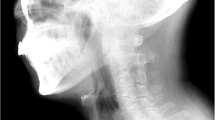Abstract
The objective of this study was to investigate the outcomes of rehabilitation (with swallowing therapy) after percutaneous endoscopic gastrostomy (PEG) in patients with neurogenic dysphagia. Forty-seven patients (29 males and 18 females) who were transferred to the rehabilitation ward of our hospital after receiving PEG tube placements during a 5-year period were enrolled in this study. Patients’ demographic data, comorbidities, nutritional statuses, and laboratory biomarkers before the PEG procedure were collected. Rehabilitation (with swallowing therapy) outcomes such as changes in Functional Independence Measure (FIM) and dysphagia grade (using Fujishima’s classification) were evaluated. Significant improvements in FIM scores and dysphagia grades after rehabilitation therapy were observed. Twenty-seven patients (57.4 %) were discharged with some oral intake and 10 patients (21.3%) were discharged PEG-free (defined as the PEG tube not being used or removed). Factors associated with being discharged with some oral intake were increase in FIM score (adjusted OR 1.10, 95 % CI 1.02–1.19) and higher baseline dysphagia grade (adjusted OR 1.88, 95 % CI 1.04–3.39). Factors associated with being discharged PEG-free were longer rehabilitation period (OR 1.03, 95 % CI 1.01–1.04), absence of respiratory disorders (OR 0.12, 95 % CI 0.03–0.35), and increase in FIM score (OR 1.17, 95 % CI 1.08–1.28). Changes in dysphagia grade were significantly correlated with changes in FIM score (r 2 = 0.46, p < 0.0001), indicating that improvement of FIM scores through general rehabilitation therapy may play an important role in the treatment of dysphagia.

Similar content being viewed by others
References
Gauderer MW, Ponsky JL, Izant RJ Jr. Gastrostomy without laparotomy: a percutaneous endoscopic technique. J Pediatr Surg. 1980;15(6):872–5.
Ha L, Hauge T. Percutaneous endoscopic gastrostomy (PEG) for enteral nutrition in patients with stroke. Scand J Gastroenterol. 2003;38(9):962–6.
Suzuki Y, Tamez S, Murakami A, Taira A, Mizuhara A, Horiuchi A, et al. Survival of geriatric patients after percutaneous endoscopic gastrostomy in Japan. World J Gastroenterol. 2010;16(40):5084–91.
Martino R, Foley N, Bhogal S, Diamant N, Speechley M, Teasell R. Dysphagia after stroke: incidence, diagnosis, and pulmonary complications. Stroke. 2005;36(12):2756–63.
González-Fernández M, Ottenstein L, Atanelov L, Christian AB. Dysphagia after stroke: an overview. Curr Phys Med Rehabil Rep. 2013;1(3):187–96.
Arnold M, Liesirova K, Broeg-Morvay A, Meisterernst J, Schlager M, Mono ML, et al. Dysphagia in acute stroke: incidence, burden and impact on clinical outcome. PLoS One. 2016;11(2):e0148424.
Mann G, Hankey GJ, Cameron D. Swallowing function after stroke: prognosis and prognostic factors at 6 months. Stroke. 1999;30(4):744–8.
Geeganage C, Beavan J, Ellender S, Bath PM. Interventions for dysphagia and nutritional support in acute and subacute stroke. Cochrane Database Syst Rev. 2012;1:10.
Hamidon BB, Abdullah SA, Zawawi MF, Sukumar N, Aminuddin A, Raymond AA. A prospective comparison of percutaneous endoscopic gastrostomy and nasogastric tube feeding in patients with acute dysphagic stroke. Med J Malays. 2006;61(1):59–66.
Gomes CA Jr, Andriolo RB, Bennett C, Lustosa SA, Matos D, Waisberg, et al. Percutaneous endoscopic gastrostomy versus nasogastric tube feeding for adults with swallowing disturbances. Cochrane Database Syst Rev. 2015;Rev 5:CD008096.
Dziewas R, Warnecke T, Hamacher C, Oelenberg S, Teismann I, Kraemer C, et al. Do nasogastric tubes worsen dysphagia in patients with acute stroke? BMC Neurol. 2008;23(8):28.
Pryor LN, Ward EC, Cornwell PL, O’Connor SN, Finnis ME, Chapman MJ. Impact of nasogastric tubes on swallowing physiology in older, healthy subjects: a randomized controlled crossover trial. Clin Nutr. 2015;34(4):572–8.
Crisan D, Shaban A, Boehme A, Dubin P, Juengling J, Schluter LA, et al. Predictors of recovery of functional swallow after gastrostomy tube placement for dysphagia in stroke patients after inpatient rehabilitation: a pilot study. Ann Rehabil Med. 2014;38(4):467–75.
Yi Y, Yang EJ, Kim J, Kim WJ, Min Y, Paik NJ. Predictive factors for removal of percutaneous endoscopic gastrostomy tube in post-stroke dysphagia. J Rehabil Med. 2012;44(11):922–5.
Nakajima M, Kimura K, Inatomi Y, Terasaki Y, Nagano K, Yonehara T, et al. Intermittent oro-esophageal tube feeding in acute stroke patients - a pilot study. Acta Neurol Scand. 2006;113(1):36–9.
Ickenstein GW, Kelly PJ, Furie KL, Ambrosi D, Rallis N, Goldstein R, et al. Predictors of feeding gastrostomy tube removal in stroke patients with dysphagia. J Stroke Cerebrovasc Dis. 2003;12(4):169–74.
Naik AD, Abraham NS, Roche VM, Concato J. Predicting which patients can resume oral nutrition after percutaneous endoscopic gastrostomy tube placement. Aliment Pharmacol Ther. 2005;21(9):1155–61.
Oto T, Kandori Y, Ohta T, Domen K, Koyama T. Predicting the chance of weaning dysphagic stroke patients from enteral nutrition: a multivariate logistic modelling study. Eur J Phys Rehabil Med. 2009;45(3):355–62.
Yokohama S, Aoshima M, Koyama S, Hayashi K, Shindo J, Maruyama J. Possibility of oral feeding after induction of percutaneous endoscopic gastrostomy. J Gastroenterol Hepatol. 2010;25(7):1227–31.
Chumney D, Nollinger K, Shesko K, Skop K, Spencer M, Newton RA. Ability of functional independence measure to accurately predict functional outcome of stroke-specific population: systematic review. J Rehabil Res Dev. 2010;47(1):17–29.
Koyama T, Matsumoto K, Okuno T, Domen K. A new method for predicting functional recovery of stroke patients with hemiplegia: logarithmic modelling. Clin Rehabil. 2005;19(7):779–89.
Hamidon BB, Nabil I, Raymond AA. Risk factors and outcome of dysphagia after an acute ischaemic stroke. Med J Malays. 2006;61(5):553–7.
Fujishima I. Rehabilitation for swallowing disorders associated with stroke. 1st ed. Tokyo: Ishiyaku Publishers; 1993. p. 72 Japanese.
Authors’ Contribution
EWTY designed and performed the study, analyzed the data, and drafted the manuscript. HJ and MN assisted in the clinical data management. All authors read and approved the final manuscript.
Author information
Authors and Affiliations
Corresponding author
Ethics declarations
Competing interests/Disclosure statement
The authors declare that they have no competing interest
Additional information
An erratum to this article is available at http://dx.doi.org/10.1007/s00455-016-9745-3.
Rights and permissions
About this article
Cite this article
Toh Yoon, E.W., Hirao, J. & Minoda, N. Outcome of Rehabilitation and Swallowing Therapy after Percutaneous Endoscopic Gastrostomy in Dysphagia Patients. Dysphagia 31, 730–736 (2016). https://doi.org/10.1007/s00455-016-9717-7
Received:
Accepted:
Published:
Issue Date:
DOI: https://doi.org/10.1007/s00455-016-9717-7




